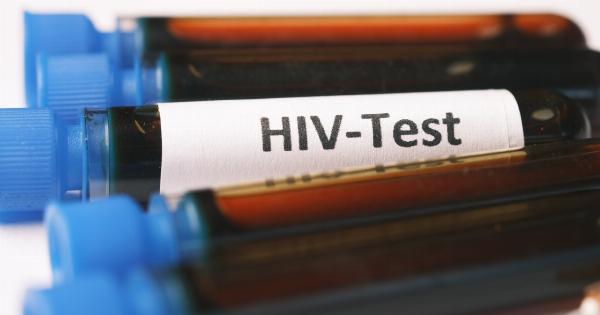HIV/AIDS is one of the most devastating diseases in the world. It is estimated that there are 38 million people living with HIV, and each year 1.7 million people are newly infected.
Despite the advances made in HIV treatment, prevention, and eradication, there is still a lot of work to be done to end this epidemic. One way to address HIV/AIDS is through awareness campaigns that promote the power of positivity.
What is HIV/AIDS?
HIV stands for human immunodeficiency virus, which attacks the immune system and weakens the body’s ability to fight off infections.
AIDS, or acquired immunodeficiency syndrome, is the advanced stage of HIV infection when the immune system is severely damaged and vulnerable to diseases and infections.
HIV/AIDS is primarily spread through unprotected sexual contact, sharing of needles or other equipment used for injecting drugs, and mother-to-child transmission during pregnancy, childbirth, or breastfeeding.
HIV/AIDS is not spread through casual contact such as handshake, hug, or sharing of food or drink.
The Importance of HIV/AIDS Awareness
HIV/AIDS awareness is crucial for several reasons. Firstly, it can help reduce new infections by promoting prevention methods such as condom use, testing, and treatment.
Secondly, it can reduce stigma and discrimination against people living with HIV/AIDS, which can prevent them from seeking medical care and support. Thirdly, it can educate the public about the challenges and needs of people living with HIV/AIDS, and encourage them to support HIV/AIDS research, advocacy, and services.
The Power of Positivity: HIV/AIDS Awareness Campaign
The Power of Positivity is a HIV/AIDS awareness campaign that promotes a positive approach to HIV prevention, testing, treatment, and care. The campaign emphasizes the following key messages:.
1. Know Your Status
Getting tested for HIV is the only way to know your status and take control of your health.
The Power of Positivity campaign encourages everyone to get tested for HIV at least once in their life, and more frequently if they are at higher risk of infection. The campaign also promotes the use of confidential and free testing facilities, and the availability of pre- and post-test counseling.
2. Practise Safe Sex
Using condoms during sexual contact is one of the most effective ways to prevent HIV transmission.
The Power of Positivity campaign promotes the correct and consistent use of condoms, along with other prevention methods such as pre-exposure prophylaxis (PrEP), which is a daily pill that reduces the risk of HIV transmission by over 90%.
3. Get Treated
Antiretroviral therapy (ART) is a treatment that can suppress HIV replication and reduce the viral load in the blood to undetectable levels.
The Power of Positivity campaign encourages people living with HIV to get tested and treated early, and to adhere to their treatment to ensure that their viral load remains undetectable. Undetectable viral load not only improves the health of the person living with HIV, but also prevents transmission to their sexual partners.
4. Take Care of Yourself
Living with HIV/AIDS can be challenging, but it is important to take care of yourself in order to stay healthy and positive.
The Power of Positivity campaign promotes self-care strategies such as eating a balanced diet, exercising regularly, managing stress, and seeking support from family, friends, or healthcare providers.
5. Stand in Solidarity
Ending the HIV/AIDS epidemic is not the job of one person or one group, but of everyone in the community.
The Power of Positivity campaign encourages solidarity and support for people living with HIV/AIDS, including those who are marginalized or discriminated against because of their HIV status. The campaign also advocates for increased funding, research, and policy changes to address the HIV/AIDS epidemic.
The Role of Social Media in HIV/AIDS Awareness
Social media is a powerful tool for spreading awareness about HIV/AIDS and promoting the Power of Positivity campaign.
Social media platforms such as Facebook, Twitter, Instagram, and YouTube can be used to share educational resources, personal stories, and positive messages about HIV prevention, testing, treatment, and care. Social media can also be used to engage with a diverse audience, including young people, people living with HIV/AIDS, healthcare providers, policymakers, and the general public.
Conclusion
HIV/AIDS is a complex and urgent global health issue that requires collective effort and commitment to end.
The Power of Positivity campaign is an innovative and positive approach to HIV/AIDS awareness that promotes prevention, testing, treatment, and care. By promoting a positive and empowering message, the campaign can help reduce stigma and discrimination, increase testing and treatment rates, and ultimately end the HIV/AIDS epidemic.





























